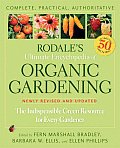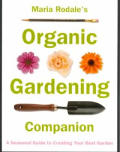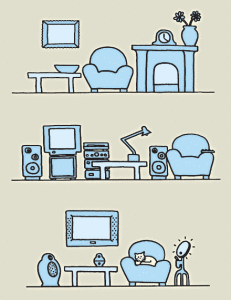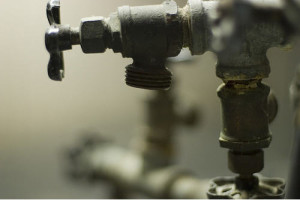Want to save your family at least $500 a year? Cut your cable.
I have to admit that not having cable is pretty easy for me, considering I’ve never had it. With my back-to-the-land parents I was 7 when my family bought a used TV (ironically my parents do pay for satellite now!). Hubby grew up in a typical pop culture family, and his college football obsession has tempted him to buy cable before, but we’ve never succumbed.
It looks like more people are opting out of mindless channel surfing: 800,000 Americans cut their cable in the past 2 years! Living cable-free has perks, like with only five real channels we can see if something is on in about two minutes.
Obviously this trend has more to do with the advent of online TV programming and Netflix. We’ve been Netflix fans since our BigGuy was born, when we no longer had energy to walk to the video store. We haven’t gotten into watching much online, but I’ve heard from Mama friends that it can be a great way to limit so-called screen time.
Speaking of screen time, this week is the “Screen Free Challenge“. I was pretty blown away to learn that kids average 8 hours a day, that’s way more that ours get in a week! On a typical week they get to 2-3 hours, and while not always easy to resist whining, I’d rather have a fit before watching TV than after. Our BigGuy used to watch a bit more and he had awful meltdowns.
There’s a great essay of Barbara Kingsolver’s about the process of weaning her daughters from TV. Plus, there are so many more fun things to do than watch TV. Read some cost effective TV alternatives.
Does your family pay for cable? Are you ready to go screen free?
~*~*~*~*~*~
Sustainable Family Finances
The story of a family creating an abundant and sustainable life.
Category Archives: budgeting
Get Growing
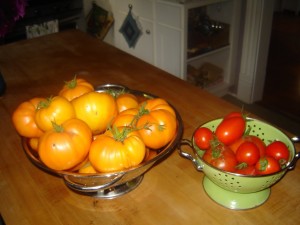
“In the Spring, at the end of the day, you should smell like dirt.” – Marget Atwood
My kiddos agree.
Spring is such a glorious season, and my favorite part is getting out in the garden! I love when it’s finally warm enough to spend the majority of our family time outdoors. It’s also exciting to teach them as the plants begin to grow with our
favorite kids’ garden books
.
Growing your own food is one of the best ways to reduce your carbon footprint, as the average produce has traveled
1500-2500 food miles
to reach your plate. Plus, it really helps you eat what’s in season and growing organic food is a great way to connect with the environment.
It also a very cost effective way to feed your family healthy food.
As you can see from my harvest of tomatoes last year, a few productive plants can provide an abundant harvest. If you can harvest for just a few weeks you’ll easily reap a return on your investment. Although I’ve never actually tried to quantify my “garden investment,” and hope this season to track it better.
Including soil amendment, this past weekend I spent $65 to get my garden started: tomatoes, basil, eggplant, celery, onions, leeks, potatoes, spinach, lettuce, cucumber, green beans, and dill. I had previously planted broccoli, cauliflower, shallots and garlic. I also have an herb garden with marjoram, oregano, curry, parsley, thyme, sage, peppermint, lemon-balm and lavender. We also have blueberries, strawberries, raspberries, rhubarb and apples.
The best advice that I’ve ever gotten is to plant what you love to eat!
You can make your garden even really budget friendly by starting from seed. Although I have to admit that I’m choosing mostly starts this season, since last year I ended up loosing almost all of my seedlings after getting sick. Until my kiddos get a little older and can truly help out with the seed process, I need to stick with the instant gratification of getting beautiful starts in the fresh Earth.
Gardening does have a steep learning curve, but don’t be intimidated. I learn more every year; last year my leeks didn’t produce much and I just realized that I didn’t plant them deep enough. My gardening “bible” is Rodale’s Ultimate Encyclopedia of Organic Gardening The “companion” workbook is also very helpful, as it provides a handy place to plan your space, log your planting dates, and make garden dreams a reality
Maria Rodale’s Organic Gardening Companion.
Transit w/ Kids
I find that the best choices for the planet and your wallet are made on a daily basis. True green decisions become so routine that you don’t even think about how much you’re saving or reducing your carbon footprint.
Taking the bus together is our daily testament to trying to be a
sustainable family
.
Whether rain, snow or sweat, we head out the door to catch the bus together. For us that means a three block walk with 2 parents, 1 preschooler, 1 toddler (still in a front carrier), 2 work bags, 1
cloth diaper
bag, clean/dirty sheets on Mondays and Fridays. It is a decent schlepp, and we get quite a few double takes en route. It’s truly worth the effort though, and we experience social, economic and environmental benefits every day.
Economic:
Taking the bus does save us money too.
We save on a monthly parking pass, which would run around $150. We also save on gas, wear/tear, tickets, etc. It’s hard to put a real price on the savings. But since we both have employer subsidized bus passes, paying $60 together, it’s certainly a bargain.
Environmental:
By taking the bus, we save at least 1500 miles per year. This save roughly 1,275 pounds of carbon annually, which is the equivalent of planting 25 trees. Occasionally we also ride the lightrail MAX, which gives us a 15 minute walk.
- Hand puppets, board books
- Lots of healthy snacks and water (not bottled!)
- Lots of smiles, songs, and smooches
Does your family ride the transit, daily or occasionally?
~*~*~*~*~*~
Sustainable Family Finances
The story of a family creating an abundant and sustainable life.
Our Personal Story of Stuff
Aside from how beautiful Oregon is, the most common remark I’ve gotten from my Danish family and friends who have visited is that our home feels and looks more European than most American homes. I’m sure this is partly because I lived in Denmark, and I appreciate the aesthetic of simple nature-inspired design. While not spartan, our home is noticeably uncluttered.
It’s also because even before kids, Hubby and I were a bit of stuff misers. We don’t want to be burdened by clutter and waste and we have a pretty low threshold for unnecessary things in our life. We make our choices about what material items we purchase very consciously and deliberately. We lived with an empty living room for almost three months just because I wasn’t willing to buy just anything. And although I love my furniture, I do regret that I was unable to purchase it without flame retardants…but that’s another story.
Here are some of the things we think about:
- We evaluate carefully whether we really “need” something – We try not to buy something just because it’s a good deal. Not that we balk at sales, we just don’t want them to control our spending and consumption habits.
- We avoid impulse purchases at all costs, and usually agree upon the “need” for a purchase at least a month or two before we actually buy it. This helps our budget and ensures that we really want/need it.
- We buy quality over quantity, like with our new vacuum.
- We try to buy used. some times this doesn’t work due to our quality criteria, but I bought Hubby a sweet Weber barbecue from Craigslist last Father’s Day.
- We think about the life-cycle of the item once we’ve purchased it and ask these simple questions:
- How long do we expect it to last?
- Will it be reusable? Or recyclable?
- How quickly will it end up in our garbage can to head to the landfill?
~*~*~*~*~*~
Sustainable Family Finances
The story of a family creating an abundant and sustainable life.
Pipes Cost
You might want to plan on spending more money on your family’s basic water and sewer utility costs in the near future and for generations to come. The amount may vary depending on your location, U.S. or otherwise, but the trend is definitely upward.
Before I go any further on this topic, I want to give a big hallelujah for being eternally grateful that my family enjoys these “services” for a relatively minimal price. It is awe-inspiring that generations before us were able to accomplish such engineering feets, and gut wrenching to know how many people around the planet cannot rely on this simple “luxury.”
Water
In p-town you can buy 4 gallons clean water for a penny!
So if you’re trying to save your family some money, don’t even think of grabbing some bottled water…but do watch the new video!
Even though the current distributions systems are pretty inexpensive, aging infrastructure is going to be costly to maintain. Public underfunding of this critical human service needs to be addressed. Most Americans spend way more on bottled beverages than we do for all the water we use to drink, bathe, wash everything, play…you get the point! (More info on EPA’s Water Infrastructure page)
While traditionally known for advocating to protect and restore rivers, American Rivers is now campaigning to
maintain a cost-effective water supply
and
fund clean water infrastructure
in order to prevent pollution. This is not your typical sexy mega-fauna activism topic, but what would the burden be on on our children’s generation if we don’t pay for the infrastructure maintenance now?
Sewers
Certainly less glamorous than a glass of clean tap water, our sewers that whisk away waste and storm water are like an unsung hero in the world of city infrastructure. Storm water is the top source of non-point pollution; meaning we don’t really know where its coming from, but it’s being gathered off roofs and streets and in many cases flushed to the river.
Sewers/storm water management can also go a long way toward continuing existing urban environmental problems or being part of the solution.
Green stormwater solutions actually cost less
than traditional discharge fees, but industries and municipalities have to be proactive.
Do you think your water/sewer rates are fair?
What would pay to buy the convenience of reliable infrastructure?
~*~*~*~*~*~
Sustainable Family Finances The story of a family creating an abundant and sustainable life.


